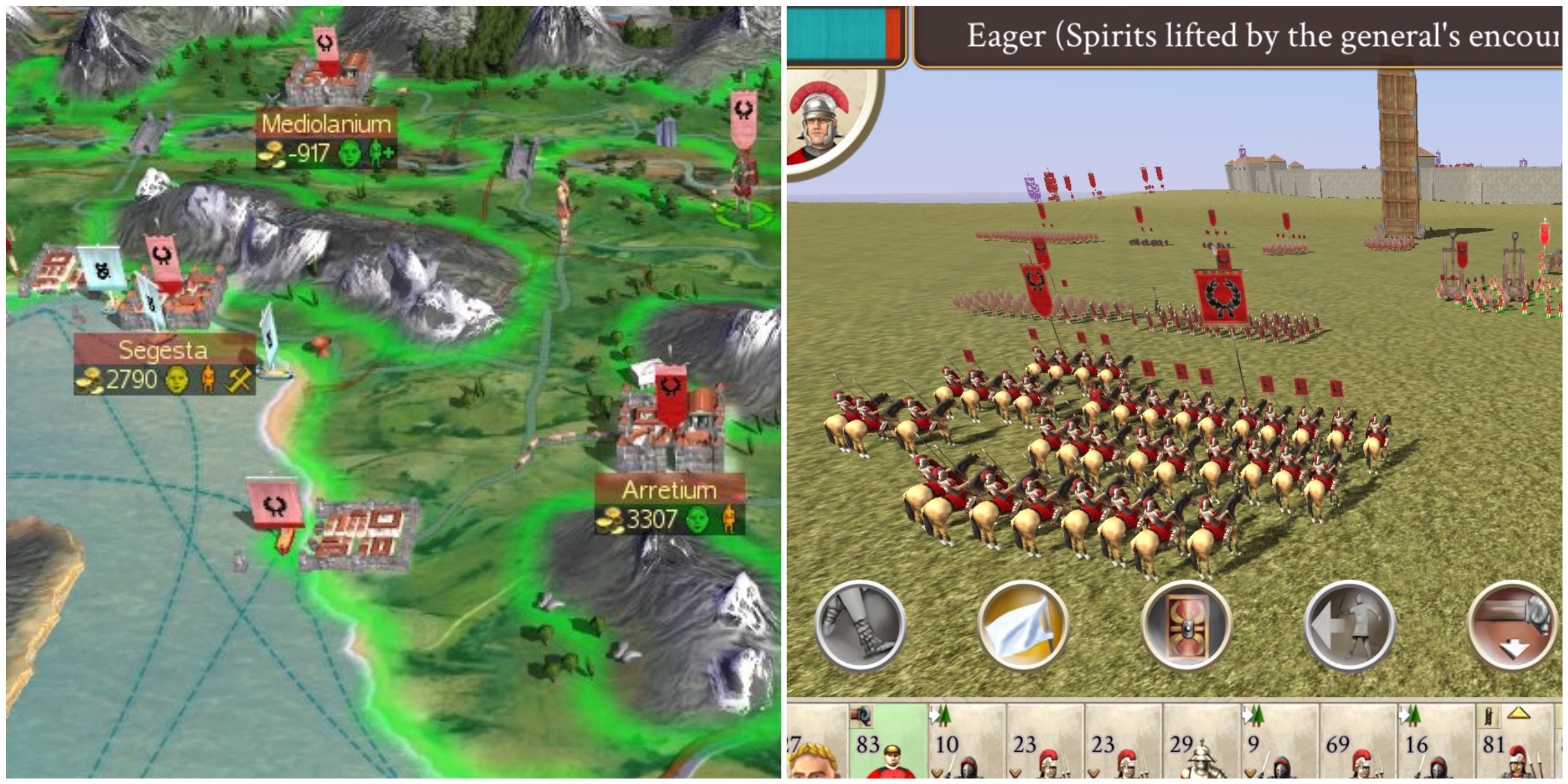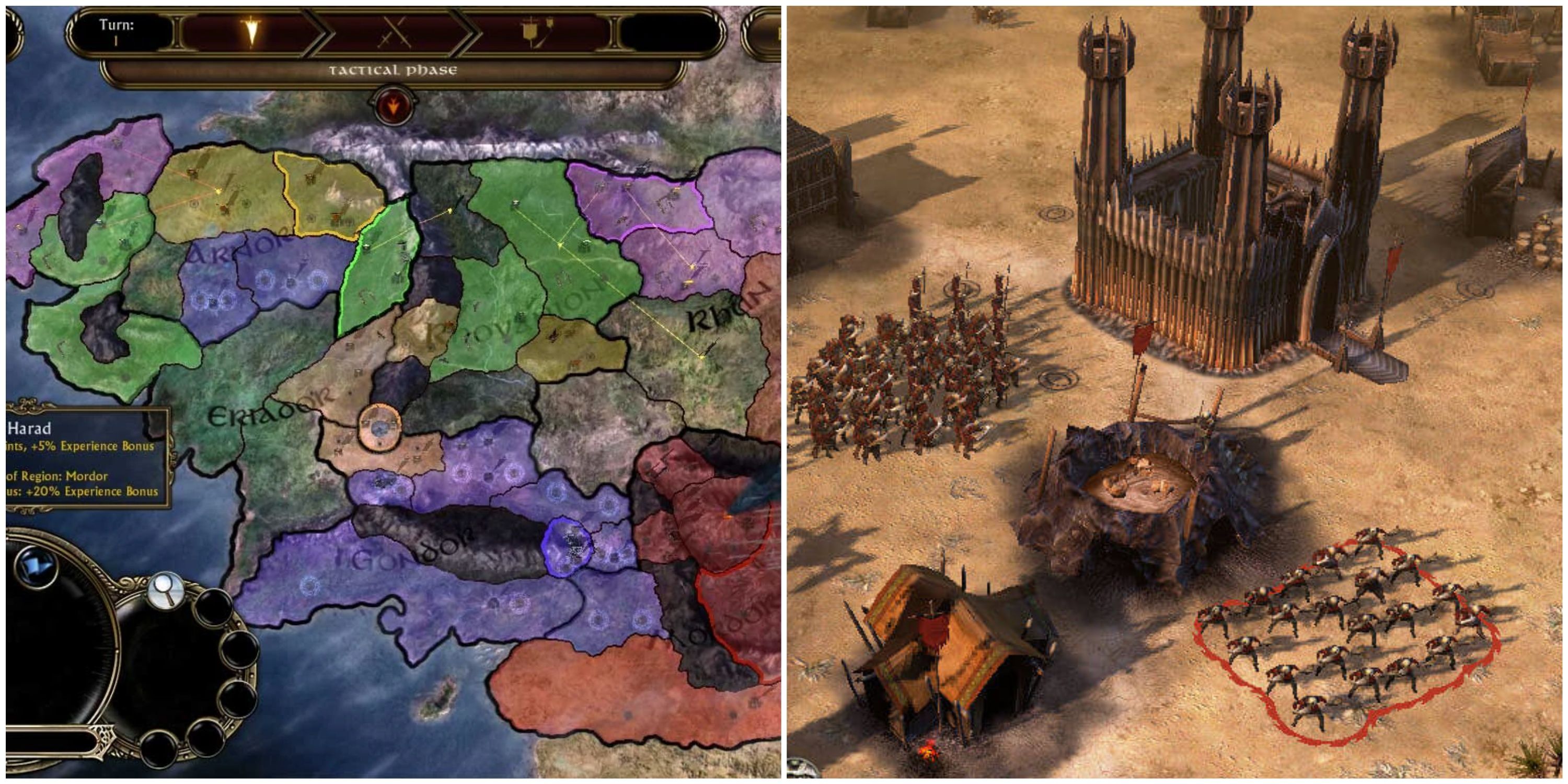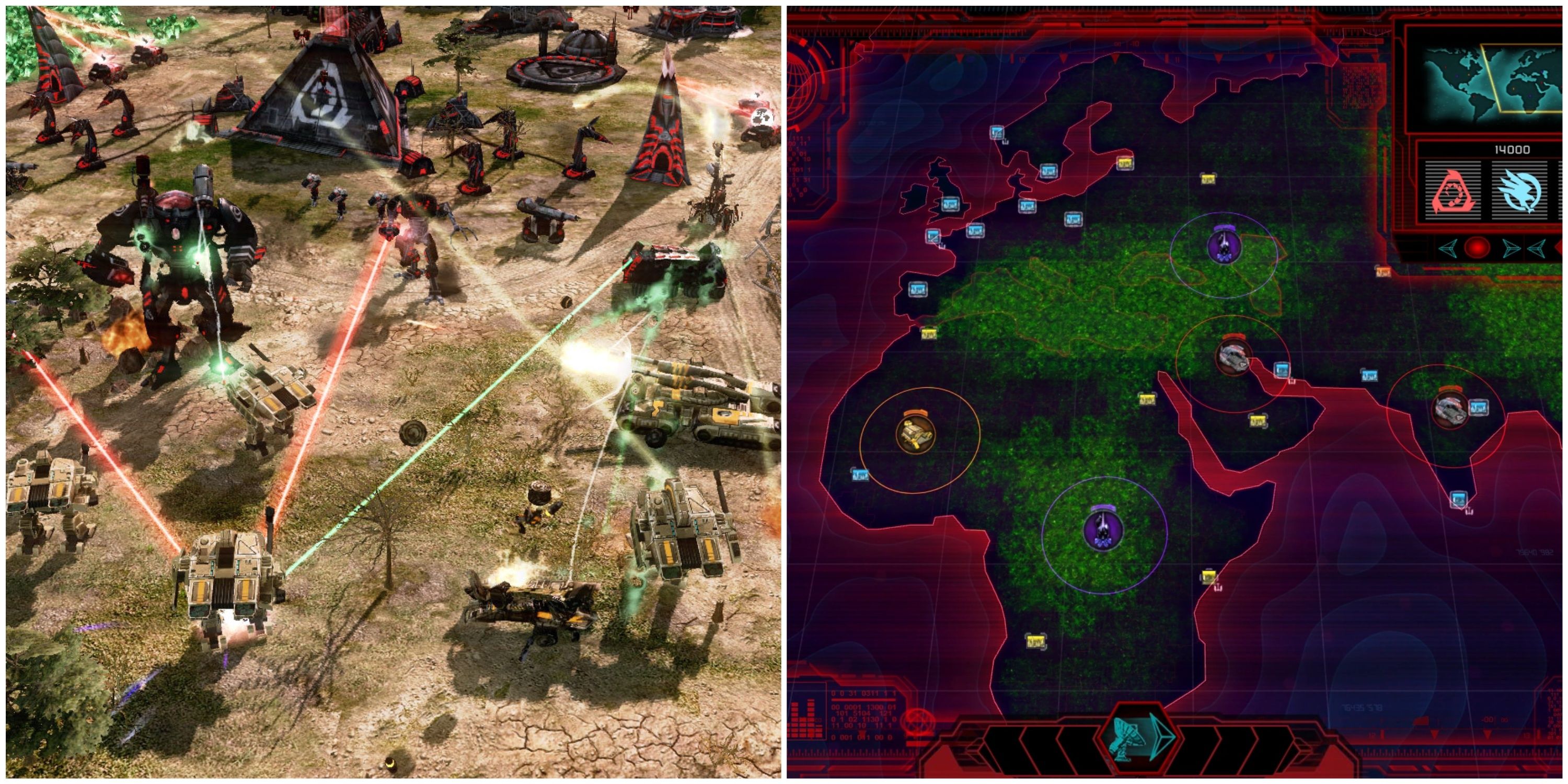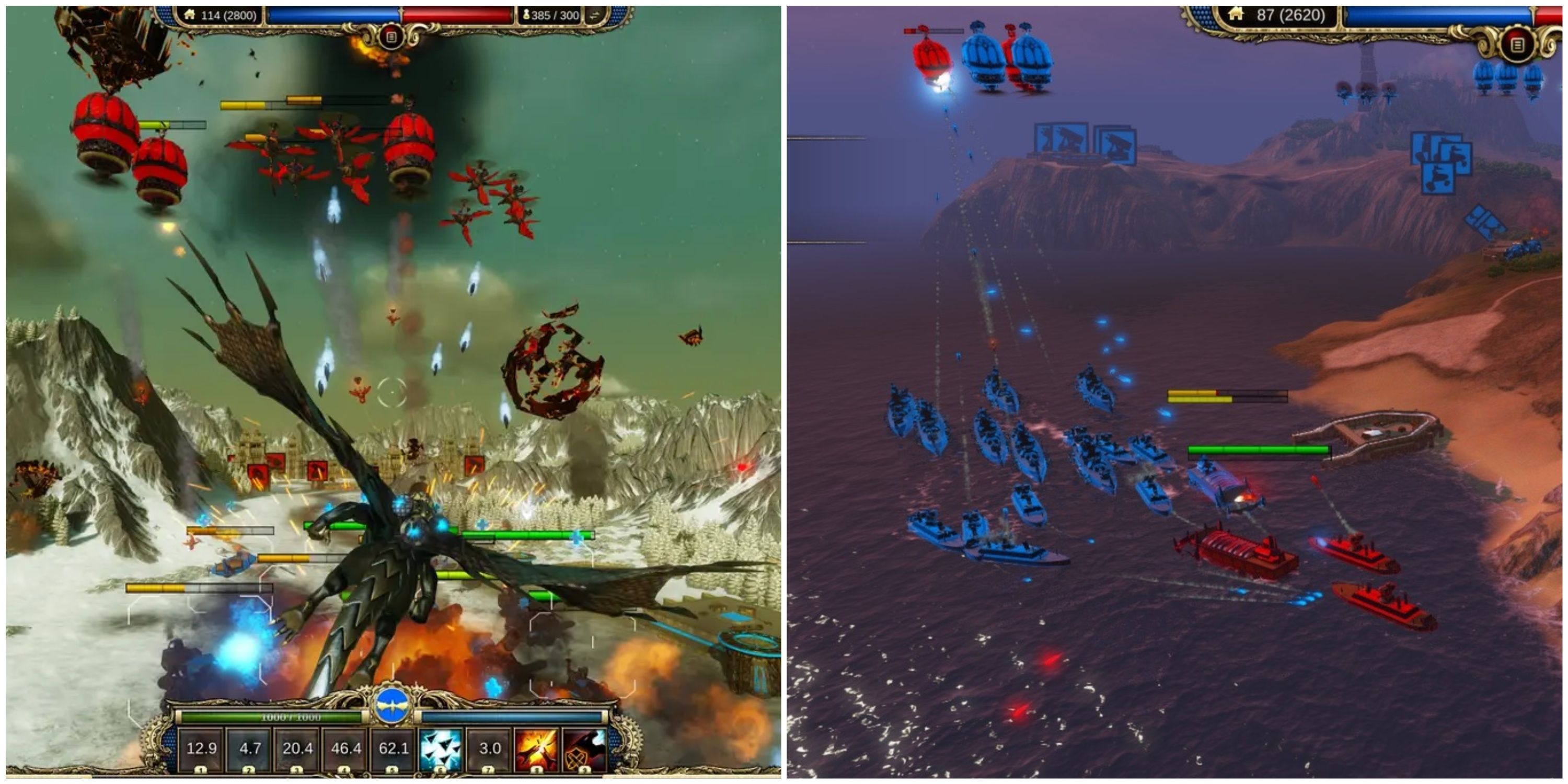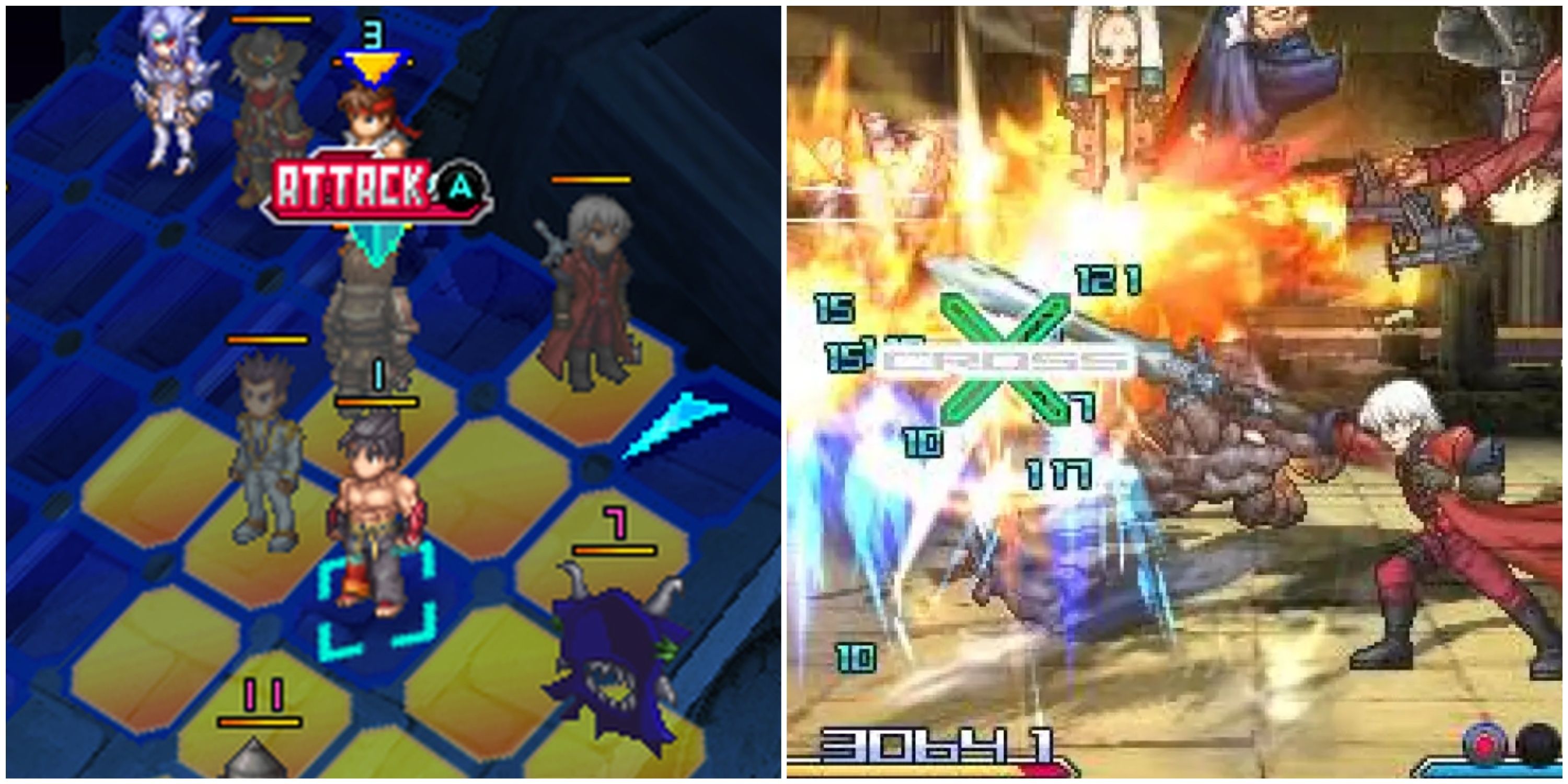Highlights
- Total War combines global strategy with real-time battles, creating a historical warfare simulation fans love.
- Lord of the Rings: Battle for Middle-earth offers tactical military gameplay, though not as deep as Total War.
- Command & Conquer 3: Kane's Wrath takes players to a grander scale with Global Conquest mode in modern warfare settings.
Strategy games come in all shapes and sizes. Some are turn-based affairs where players methodically plan their moves in a set order. Other games opt for a real-time approach where everyone acts simultaneously and tries to think on the fly. However, why should developers limit themselves to just one of these types?
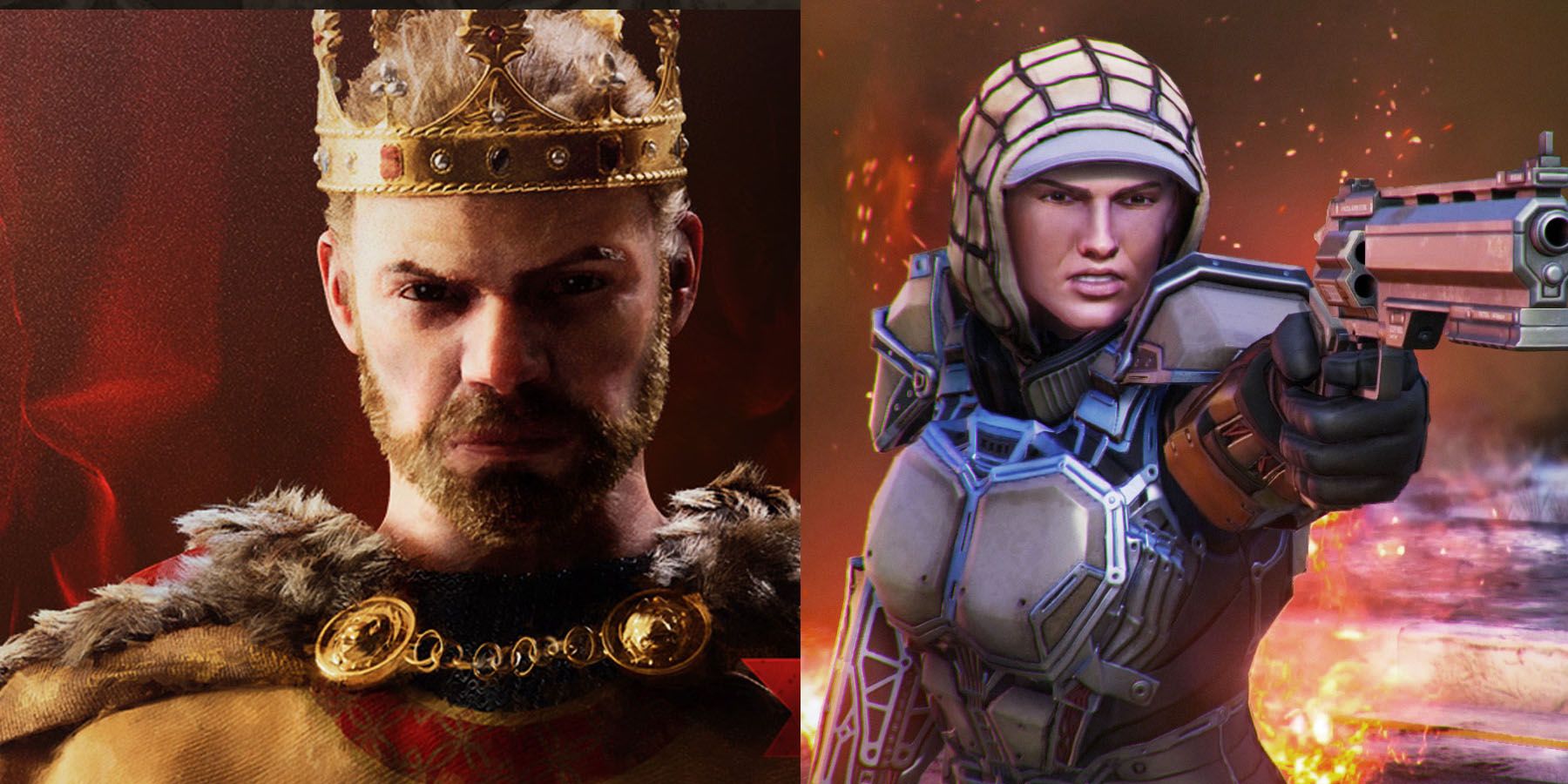
10 Best Strategy Games That Let You Lead Rebellions
The following strategy games allow players to take the role of underdogs and stage rebellions against more powerful forces.
Certain strategy titles blend these two gameplay styles. They use turn-based tactics to simulate large-scale warfare, usually across a global map. Once the individual battles begin, though, they switch to real-time skirmishes where players direct units and squads to take action in an isolated arena. These two styles differ radically in pacing. In addition, they require fans to think in both the short and long term. The results are a challenging change from the usual grind, but that's why gamers love them. Oddball combinations like these are a key path to novelty and innovation.
1 Total War
Players Fight History's Greatest Battles On Both A Global Scale And Single Battlefields
Total War: Warhammer 3
- Platform(s)
- PC
- Released
- February 17, 2022
- Developer(s)
- Creative Assembly
- Genre(s)
- Strategy , Tactical
The most recognized example, the Total War franchise has blended these genres since the beginning. Each entry presents a massive map, its regions spanning several countries. It's not unlike Civilization in that sense. Players then take turns moving units around this map to spread their empires. The units can be spies or diplomats, but they're usually some form of army battalion. It's not long before these squads clash. That's where the true enjoyment occurs.
When military units come to blows, Total War switches to an RTS format. Players move formations around an open environment, its terrain corresponding with which region the battle occurs. Success can depend on numbers, formation, position, equipment, and leadership. For instance, killing a general may cause his subordinates to flee. Total War sticks with this formula for most of its entries. It's perhaps the most effective simulation of historical warfare, both in grand terms and moment-to-moment thrills.
2 The Lord Of The Rings: The Battle For Middle-Earth
This Fantasy Realm Has No Shortage Of Exciting Locales, And All Of Them Make For Challenging Battlegrounds
The Lord of the Rings franchise naturally suits the Total War approach. The Battle for Middle-earth mirrors the above franchise in many ways. The narrative campaign unfolds across a map of Middle-earth. Players build armies and move them to various regions, thereby spreading the influence of either the Free Peoples or the legions of Mordor.
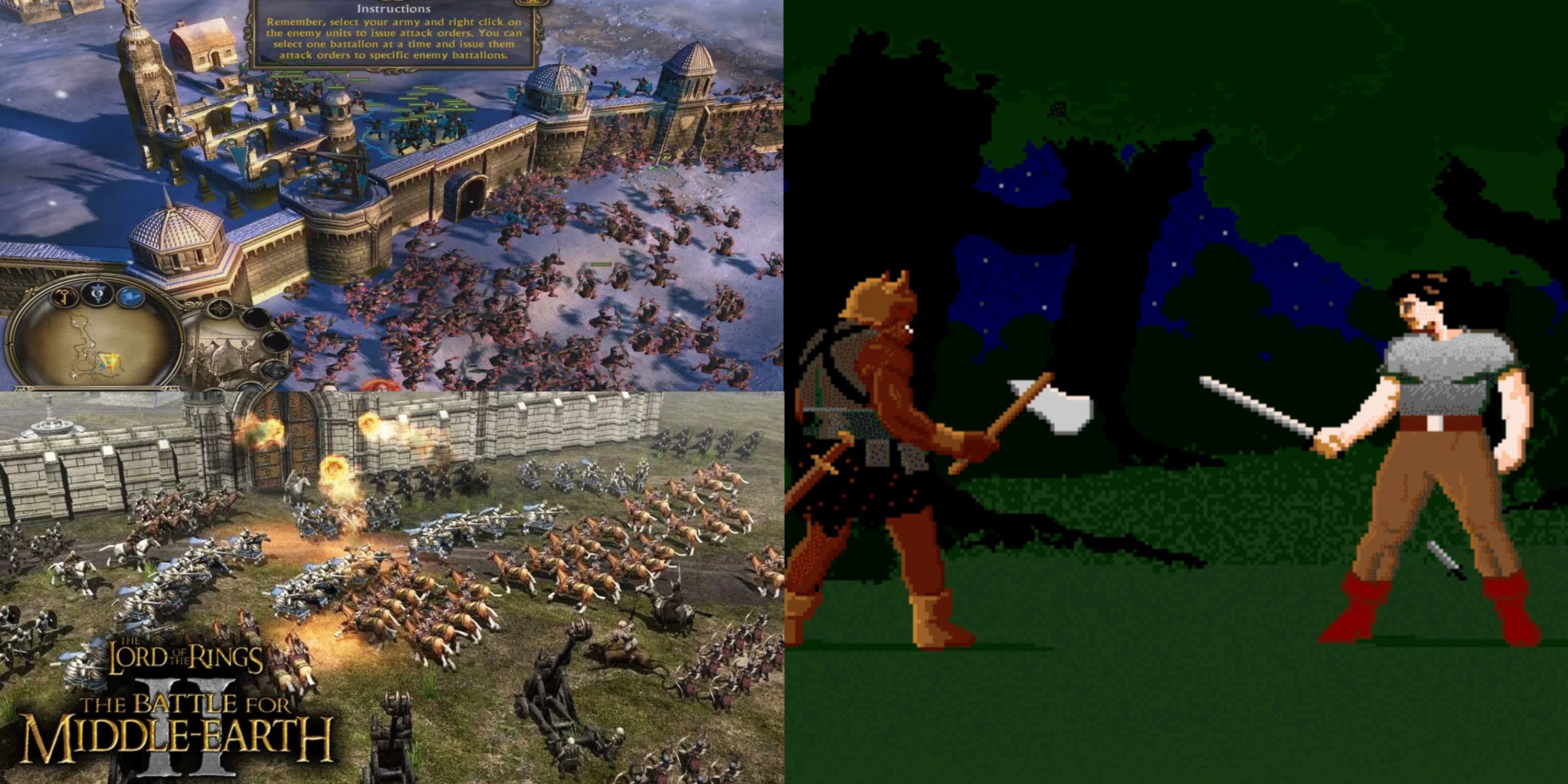
8 Best Lord Of The Rings Strategy Games, Ranked
The Lord of the Rings franchise has dipped into the strategy game genre throughout the years. Here are some of the strongest entries.
They then control these armies individually during real-time battles. These skirmishes involve wiping out the other faction or taking an outpost. Sadly, the mechanics aren't quite as deep as Total War. There are only combat units; spies, assassins, and diplomats are absent. However, the game still invites tactical thinking from players, at least in the military sense.
The Battle for Middle-earth 2 expands on that side of the experience. While the main campaign opts for predetermined story battles, the other modes compensate. Here, fans can conquer a much larger map comprising the entirety of Middle-earth. In addition, the sequel sports multiple good and evil factions: Men, Elves, Dwarves, Orcs, Uruk-kai, and Goblins. Each has abilities and quirks to mix up the strategic gameplay. Goblins, for instance, can dig underground tunnels to traverse great distances and outflank enemies. This depth helps the sequel stand as one of the greatest games in the Lord of the Rings pantheon.
3 Command & Conquer 3: Kane's Wrath
One Entry Takes The Series' Real-Time Battles Across The Globe
The Command & Conquer series primarily subsists on real-time strategy. Like previous examples, players move units around the battlefield, combatting enemy troops in chaotic skirmishes. The difference lies in modern warfare. Rather than swords, shields, and arrows, players rely on guns, bombs, and tanks. They must adapt to that change and adjust their plans accordingly. Said plans usually don't go beyond small battlefields.
Command & Conquer 3: Kane's Wrath takes a grander approach. This entry includes Global Conquest mode, which is exactly what it sounds like. It sees fans launch assaults across entire countries. Thanks to their advanced tech, bases have a larger area of influence. A mere handful can cover a whole continent. Despite that increased scope, the principle is the same. Each faction takes turns deploying strike forces and upgrading bases. Attacking enemy armies initiates real-time battles. From there, it's typical Command & Conquer fare. It's a shame that subsequent entries abandoned this mode.
4 Divinity: Dragon Commander
Players Command Their Troops Before Leading Them As A Dragon Rider
Divinity: Dragon Commander
- Platform(s)
- PC
- Released
- August 6, 2013
- Developer(s)
- Larian Studios
- Genre(s)
- RPG , Strategy
The Divinity franchise already deals heavily in tactics. It's not outlandish for Dragon Commander to dabble in grand strategy. In this offshoot, players use the vibrant fantasy realm to build bases. It's here that they manage armies, provide for people, converse with advisors, and conquer new regions. Factions take turns performing these tasks. Again, Total War and Command & Conquer are prominent influences.
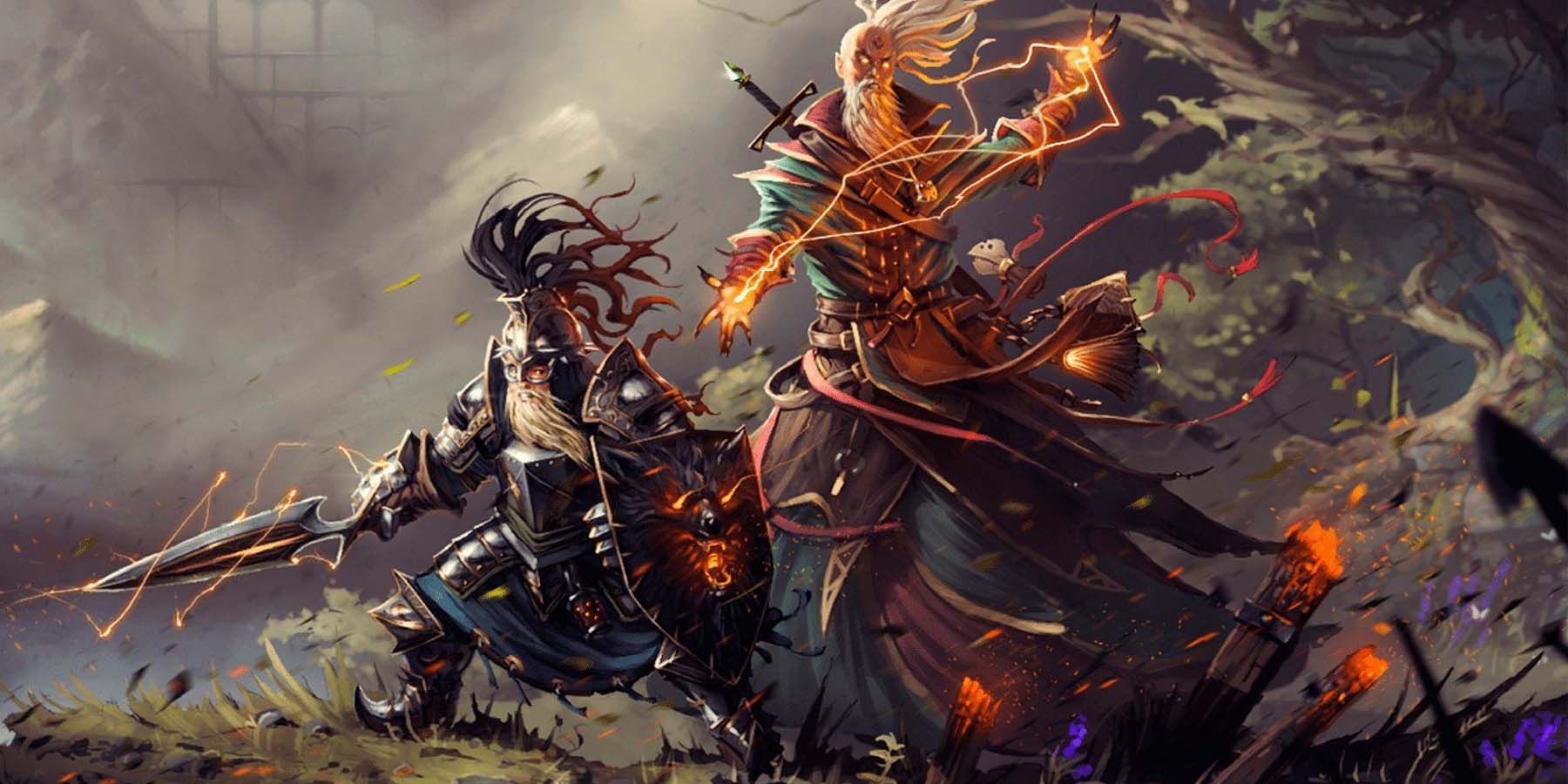
12 Pro Tips For Playing Divinity: Original Sin 2
Divinity: Original Sin 2 is a great fantasy RPG that gives you a lot of options in terms of customization. Here are some useful tips.
That philosophy extends to battles. Units operate by land, air, and sea. The variety stems from a unique blend of medieval fantasy and steampunk. Though these elements make the game slightly more archaic than its genre peers, they should feel familiar nevertheless. That said, what truly distinguishes this title lies in the name.
The game isn't called Dragon Commander for nothing. During combat, players can morph into a fire-breathing lizard. The game then becomes an airborne third-person shooter or flight sim as players rain napalm down on unsuspecting grunts. This power is a chaotic addition to an already bizarre mixture. Ultimately, it gives Divinity its own identity within a niche genre.
5 Project X Zone
Grid Tactics Give Way To Tag-Team Fighting In This Bizarre Crossover
Project X Zone 2
- Platform(s)
- Nintendo 3DS
- Released
- February 16, 2016
- Developer(s)
- Monolith Soft
- Genre(s)
- Tactical , RPG
Here's an even weirder combination. Project x Zone is a crossover series where characters from disparate franchises duke it out. Said franchises include Devil May Cry, Mega Man, Tekken, Yakuza, and countless others. One might expect a pure brawler or fighting title, but the result is a tactical RPG. Players take turns moving characters around a grid-based battlefield. Colliding with enemy units triggers a combat mode.
From here, the game transitions to a 2D fighter format. The cartoonish sprites and flashy combos strongly resemble Marvel vs. Capcom, but these fights involve multiple combatants. Synchronizing their moves can yield devastating combo attacks. While these duels downplay the strategic element, the radical shift keeps the gameplay interesting. Such experimentation is the point of mixing genres.

15 Most Hardcore Grand Strategy Games Ever, Ranked
There are plenty of grand strategy games on the market, but these titles offer a sure test of players' skills.

